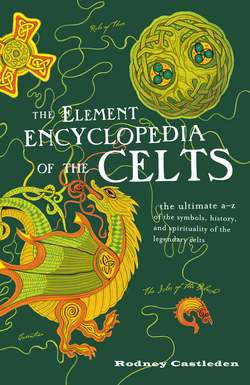Читать книгу The Element Encyclopedia of the Celts - Rodney Castleden - Страница 221
PEOPLE
ОглавлениеIn the 1950s it was estimated that there were about 250,000 people in Britain in 100 BC, increasing to 400,000 by the time of the Roman invasion. More recent estimates have been more cautious, and few prehistorians now will attempt even to guess a population figure, but the numbers do seem to have increased in the late Iron Age. This population growth may have been associated with improvements in food production. Julius Caesar’s description leaves out numbers:
The population [of Britain] is exceedingly large, and the ground thickly studded with homesteads, closely resembling those of the Gauls, and the cattle very numerous… There is timber of every kind, as in Gaul, except beech and fir. Hares, fowl and geese they think it unlawful to eat, but rear them for pleasure and amusement. The climate is more temperate than in Gaul, the cold being less severe… Most of the tribes of the interior do not grow corn, but live on milk and meat and wear skins.
It was Julius Caesar who also created for posterity the enduring image of blue-painted savages: “All the Britons, indeed, dye themselves with woad, which occasion a bluish colour and thereby have a more terrible appearance.” It is still not clear whether this meant that the Britons painted their bodies with woad or tattooed themselves.
Diodorus Siculus gave a description of what the Gauls did to their hair. Men and women wore it long, sometimes plaited: “They continually wash their hair with limewash and draw it back from the forehead to the crown and to the nape of the neck, with the result that their appearance resembles that of Satyrs or of Pans, for the hair is so thickened by this treatment that it differs in no way from a horse’s mane.” This description is supported by the statue of the Dying Gaul (see Symbols: Nudity) and the coin portrait of Vercingetorix.
Normally, the Celts were warmly clad. They wore close-fitting trousers that the Romans referred to as bracae, “breeches.” Over these they wore a long tunic made either of wool or of linen, which was held at the waist by a belt. Over this, they wore a cloak that was fastened at the shoulder with a brooch. The textiles were dyed bright colors and threads of different colors were woven so as to produce striking striped or checked patterns (See Tartan). The Roman observers were startled by the colors and patterns, which they were not used to seeing.
Nor were they used to seeing beards and moustaches. The Celts grew both and grew them long. Diodorus commented fastidiously, “When they are eating, the moustache becomes entangled in the food, and when they are drinking the drink passes, as it were, through a sort of strainer” (See Dress).
